Break in new cylinder, pistons & rings
- JanTaliban
-
 Topic Author
Topic Author
- Offline
- User
-

Registered
- Z750 LTD Twin -83
- Posts: 45
- Thanks: 0
Break in new cylinder, pistons & rings
02 Apr 2008 10:27
Hi!
What is the best way to break in my engine? I have a new set of pistons and rings, and a new cylinder. Thank you in advance.
Sincerley/Janne
What is the best way to break in my engine? I have a new set of pistons and rings, and a new cylinder. Thank you in advance.
Sincerley/Janne
KZ 750 Twin -83
Please Log in or Create an account to join the conversation.
- PLUMMEN
-
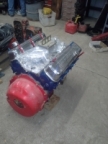
- Offline
- User
-

Registered
- Posts: 7986
- Thanks: 104
Re: Break in new cylinder, pistons & rings
02 Apr 2008 10:53
change the oil after 1st 50 miles or so,lots of metal will be in oil after the rings try to start seating themselves.take it reasonably easy on it for first couple hundred miles,change oil again at around 500 miles then start riding it like you plan on using itB)
Still recovering,some days are better than others.
Please Log in or Create an account to join the conversation.
- BSKZ650
-
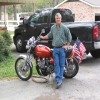
- Offline
- User
-

Registered
- Posts: 2061
- Thanks: 14
Re: Break in new cylinder, pistons & rings
02 Apr 2008 13:09
on the first fire up, put a fan in front of the motor so you can set the timing and chaeck anything else you need to do, let it run for about 30 min @ 2-3k,,, shut it down and retorque the head, then do as plummen said,,, and ride it like you stole it
77 kz650, owned for over 25 years
77 ltd1000, current rider
76 kz900, just waiting
73 z1,, gonna restore this one
piglet, leggero harley davidson
SR, Ride captian, S.E.Texas Patriot Guard Riders.. AKA KawaBob
77 ltd1000, current rider
76 kz900, just waiting
73 z1,, gonna restore this one
piglet, leggero harley davidson
SR, Ride captian, S.E.Texas Patriot Guard Riders.. AKA KawaBob
Please Log in or Create an account to join the conversation.
- bountyhunter
-

- Offline
- User
-

Registered
- Posts: 7245
- Thanks: 338
Re: Break in new cylinder, pistons & rings
02 Apr 2008 13:22 - 02 Apr 2008 13:22
Back in 1979, my new KZ-750 came with a sticker on the tach that said keep it under 4000 RPM for the first 500 miles, then under 6000 until 1K miles. First service on mine (oil change and valve adjust) was at 500 miles. The dealer said anytime between 500 and 1K was fine.
I agree to change oil soon after fire up (maybe a couple of hundred miles). I also agree with retorquing the head although a lot of people say the new gaskets don't require it. Mine sure did, the torque dropped about 30% after first running. Probably want to check the valves at a few hundred just to be sure something didn't "seat" and take your clearance away. Not likely, but sometimes they shift a bit.
I agree to change oil soon after fire up (maybe a couple of hundred miles). I also agree with retorquing the head although a lot of people say the new gaskets don't require it. Mine sure did, the torque dropped about 30% after first running. Probably want to check the valves at a few hundred just to be sure something didn't "seat" and take your clearance away. Not likely, but sometimes they shift a bit.
1979 KZ-750 Twin
Last edit: 02 Apr 2008 13:22 by bountyhunter.
Please Log in or Create an account to join the conversation.
- 76 LTD
-
- Offline
- User
-

Registered
- Posts: 278
- Thanks: 1
Re: Break in new cylinder, pistons & rings
02 Apr 2008 14:33
Buddy of mine bought a new Z1 in 74 the dealer told him to break it in the way your gonna ride it.
Please Log in or Create an account to join the conversation.
- Becker
-
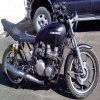
- Offline
- User
-

Registered
- The Doctor Will Rise Again
- Posts: 384
- Thanks: 1
Re: Break in new cylinder, pistons & rings
03 Apr 2008 18:38
I've always been told to take it easy on the engine for the first thousand or so and do like everyone else in this forum says. However there is a website (
www.mototuneusa.com/break_in_secrets.htm
) where this guy called motoman states a different breakin procedure athat goes against this common logic he also supplies alot of stories and sounds like a credible race mechanic but I don't know how much I would trust this. All I know is that my next break-in I will do exactly like all the rest I've done. Its worked so far but has anyone tried anything like this??
78 KZ750B3
79 KZ400 LTD
78 KZ650C2
79 KZ650C3
78 KZ650B2A
80 KZ650F1
80 KZ650E1
81 CB750K Super Sport
79 KZ400 LTD
78 KZ650C2
79 KZ650C3
78 KZ650B2A
80 KZ650F1
80 KZ650E1
81 CB750K Super Sport
Please Log in or Create an account to join the conversation.
- 77_650B1
-
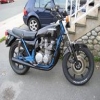
- Offline
- User
-

Registered
- Posts: 372
- Thanks: 0
Re: Break in new cylinder, pistons & rings
03 Apr 2008 19:11 - 03 Apr 2008 19:16
You know, I've heard this multiple times as well. Its kind of up to the individual I guess, if they want to risk going against manufacturers recommendations.
From what I understand, a mix of these is more accurate. Dont go mad for the first 1000 miles or so, but dont drive around at constant rpm either. Varying your rpm, moderate acceleration and deceleration seems to be key, but dont go too high in the revs. Change your oil at about the intervals the lads say, and you should be fine with this technique.
From what I understand, a mix of these is more accurate. Dont go mad for the first 1000 miles or so, but dont drive around at constant rpm either. Varying your rpm, moderate acceleration and deceleration seems to be key, but dont go too high in the revs. Change your oil at about the intervals the lads say, and you should be fine with this technique.
1977 KZ650-B1
-Dual Discs
-Dyna-S
-WG Coil Mod
-Alloy Wheels
-Dual Discs
-Dyna-S
-WG Coil Mod
-Alloy Wheels
Last edit: 03 Apr 2008 19:16 by 77_650B1.
Please Log in or Create an account to join the conversation.
- love2ride
-

- Offline
- User
-

Registered
- Ngati Tumatauenga
- Posts: 76
- Thanks: 1
Re: Break in new cylinder, pistons & rings
03 Apr 2008 20:45
All Kawasaki's come with that sticker for break-in. Has not changed for forever.
Took the sticker off and it did not tell me how to break-in the engine. So I rode it like I would any other time. This is on the 250 and it is still going strong at 28,363 miles.
I did change the oil at the first 50 and 600 miles.
Took the sticker off and it did not tell me how to break-in the engine. So I rode it like I would any other time. This is on the 250 and it is still going strong at 28,363 miles.
I did change the oil at the first 50 and 600 miles.
Newport News, Va
2006 Ninja 250 - Commuter
1978 KZ1000 - Not even close to stock.
2006 Ninja 250 - Commuter
1978 KZ1000 - Not even close to stock.
Please Log in or Create an account to join the conversation.
- wiredgeorge
-

- Offline
- User
-

Registered
- Posts: 5309
- Thanks: 45
Re: Break in new cylinder, pistons & rings
04 Apr 2008 06:23
I am not sure why folks who put a new set of rings in think they need to perform a "break in". The engine is 30 years old and was broken in 30 years ago. You are trying to seat the rings. Ride the bike normally and don't ride at one sustained speed like on a freeway at 67 mph for extended periods... VARY ENGINE SPEED. Change your oil fairly soon; say 500 miles because when the rings bite, they will put some minor amounts of metal in the pan.
wiredgeorge Motorcycle Carburetors
Mico TX
www.wgcarbs.com
Too many bikes to list!
Mico TX
www.wgcarbs.com
Too many bikes to list!
Please Log in or Create an account to join the conversation.
- steell
-
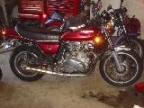
- Offline
- User
-

Registered
- Posts: 6849
- Thanks: 208
Re: Break in new cylinder, pistons & rings
04 Apr 2008 07:11
I think this one is reasonable.
www.cycle-parts.com/forum/archive/index.php?t-83.html
My opinion: The bike should be started and allowed to warm up at an idle for about two minutes. This is to get the oil at something close to operating temperature. Then, ride the bike normally for about 5 miles. Stay off freeways or anywhere else that would make you maintain a constant speed. Don't lug the engine - run the engine in the mid-range rpm band, roughly 1/3 to 2/3 of the red line rpm. You want to be accelerating and decelerating, and using the engine as a brake to slow you down at times. Stop, turn off the engine, and let the engine cool for about 5 minutes. This is to even out the temperature in case there are any hot spots. Start the bike and ride for about 10 minutes, again in stop and go traffic. Stop and allow about 5 minutes for the engine temperature to even out.
Now, ride the bike fairly hard for about 25 to 50 miles. A mountain or curvy road is a good thing at this point. You can use the entire rpm band, up to and perhaps even a bit over the red line. Make sure to accelerate and decelerate a lot, using full throttle and using the engine as a brake. Notice that your owner's manual says at this point you should still be keeping the RPM under something like 4,000. I disagree with this quite strongly. Moto Man gives a good argument on why the factories give such a recommendation, which goes against all my experience and understanding and what every racing team in the universe does.
www.cycle-parts.com/forum/archive/index.php?t-83.html
KD9JUR
Please Log in or Create an account to join the conversation.
- steell
-

- Offline
- User
-

Registered
- Posts: 6849
- Thanks: 208
Re: Break in new cylinder, pistons & rings
04 Apr 2008 07:56
And another good one.
www.ntnoa.org/enginebreakin.htm
.
Most people seem to operate on the philosophy that they can best get their money's worth from any mechanical device by treating it with great care. This is probably true, but in many cases it is necessary to interpret what great care really means. This is particularly applicable when considering the break-in of a modern, reciprocating engine.
For those who still think that running the engine hard during break-in falls into the category of cruel and unusual punishment, there is one more argument for using high power loading for short periods (to avoid excessive heat) during the break-in. The use of low power settings does not expand the piston rings enough, and a film of oil is left on the cylinder walls. The high temperatures in the combustion chamber will oxidize this oil film so that it creates glazing of the cylinder walls. When this happens, the ring break-in process stops, and excessive oil consumption frequently occurs. The bad news is that extensive glazing can only be corrected by removing the cylinders and rehoning the walls. This is expensive, and it is an expense that can be avoided by proper break in procedures.
We must achieve a happy medium where we are pushing on the ring hard enough to wear it in but not hard enough to generate enough heat to cause glazing. Once again, if glazing should occur, the only remedy is to remove the effected cylinder, re-hone it and replace the piston rings and start the whole process over again.
We asked four top motorcycle engine builders what they do to ensure peak power output and optimum engine life. Here is a capsulation of their responses.
"If the wrong type of oil is used initially, or the break-in is too easy, rings and cylinders could (read will) glaze and never seal properly. A fresh cylinder wall needs some medium to high engine loading to get the piston rings to seat properly for good compression but make sure you don't lug or overheat the engine. Use high quality, low viscosity oil (Valvoline 30 weight), no synthetics, too slippery. If synthetics are used during initial break in the rings are sure to glaze over.
An engine's initial run should be used to bring oil and coolant (air, oil, and/or water) up to operating temperature only, with little or no load, then shut down and allowed to cool to ambient temperature. This is important. After each run the engine needs to completely cool down to ambient temperature. In Texas, especially in the summer, that's still pretty hot. After a cool down period, start it up again and take the motorcycle for it's fist ride (you hope).
This time give the engine light loads at relatively low rpm and stay out of top gear. Lugging the engine, i.e., low RPM with a lot of throttle (manifold pressure), is more detrimental than high rpm. Another key is too constantly vary engine load during the entire break-in period. A constant load is not ideal for breaking in bearing tolerances. This second run should last only 10-15 minutes before another complete cool down.
The third run should see slightly higher rpm with light to medium power loading using short bursts of acceleration to help seat the rings. Again 10-15 minutes of running should do it and again avoid top gear. A forth run should consist of light to medium engine loads with a few more bursts of medium-high rpm, and lasting just 10-15 minutes varying the engine load and again avoiding top gear. Next while the engine is still warm drain the oil and change the filter. This gets out the new metal particles that are being worn away. Most of the metal particles will break away within the first 50 -75 miles. To ensure the rings seat well, use the same high quality oil and don't be shy about short duration high rpm blasts through the lower gears after the oil has been changed.
A few more 15-20 minute sessions should be used to work up to the engine's redline gradually increasing the engine loads. After some definite hard running and 250-500 miles it's a good idea to check the valves. After 500 miles re-torqueing the head is suggested. Switch to synthetic oil but not before 500-1500 miles. Most of the engine experts warned of the danger of breaking in the engine too easily and ending up with an engine that will always run slow whether it is from tight tolerances, inadequate ring seal or carbon buildup. Engine load is more detrimental than rpm because of the head created internally, so avoid lugging the engine but rev it freely especially in the lower gears. Basically, be sure not to get it too hot but be sure to seat the rings properly.
So that's it, sure a lot different than keeping under 4000 rpm for 500 miles then under 5000 rpm for 1000 miles. Maybe bike manufacturers are being super cautious at the expense of your motor's performance? I think that they take the cautious route that works over time (1000 miles, or about 20 hours of break in) versus a faster route that can be more easily screwed up."
www.ntnoa.org/enginebreakin.htm
.
KD9JUR
Please Log in or Create an account to join the conversation.
- bountyhunter
-

- Offline
- User
-

Registered
- Posts: 7245
- Thanks: 338
Re: Break in new cylinder, pistons & rings
04 Apr 2008 11:40
steell wrote:
And another good one.
FWIW, the consensus of what I have read relegates that one into urban myth category. The advantage (or difference) of synthetic oil is not it's "slipperyness", it is that it's viscosity is very constant and stands up to heat very well, also it doesn't break down as readily from shearing.Use high quality, low viscosity oil (Valvoline 30 weight), no synthetics, too slippery. If synthetics are used during initial break in the rings are sure to glaze over.
.
Some makers of very high end cars not only use synthetic in the new engine, they call it out for use.
YMMV
1979 KZ-750 Twin
Please Log in or Create an account to join the conversation.
Moderators: Street Fighter LTD

